Our first port day and our first full day of exploring Europe. We woke up docked in Palma de Mallorca, the capital of Spain’s Balearic Islands and the first stop on our Mediterranean cruise.
Since this was our first time here, we decided to take the Hop-On Hop-Off bus to get a quick overview of the city. It’s one of our favorite ways to explore someplace new. Easy, low-stress, and perfect when you only have a few hours in port.
Because I like to have things planned ahead and limit surprises, I booked our tickets online through GetYourGuide before the trip. They sent a QR code, which I simply showed when we boarded – quick and painless. The tickets for both of us totaled $50.10 USD, which felt fair for the convenience.
Not everyone had such a smooth experience, though. A couple ahead of us insisted they’d paid online but didn’t have the QR code, and the driver wouldn’t let them on without it. Things got a little tense (the woman was not happy), but it was a good reminder to always double-check that you have your confirmation code ready before you go.
From the open-top bus, we passed through the heart of Palma’s Old Town, where cobblestone streets wind between historic buildings and palm-lined boulevards. The architecture alone told the story – a mix of Roman, Moorish, and Spanish influences that make this island unlike anywhere else we’ve been.
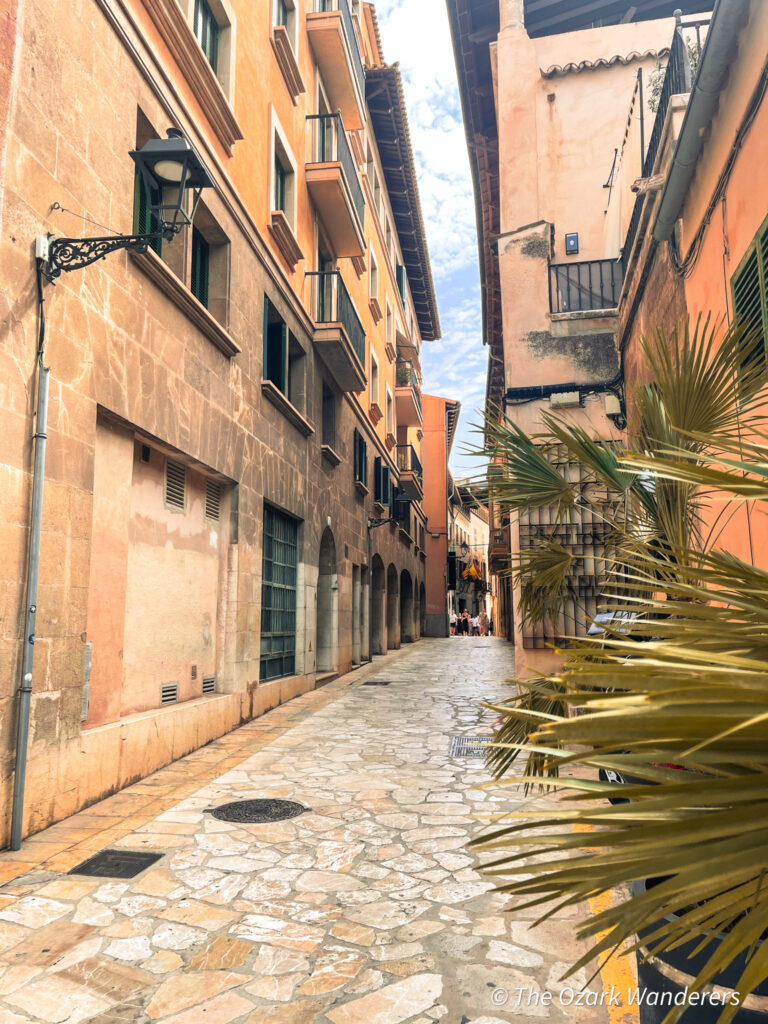
Passeig del Born Avenue in Palma de Mallorca
One of my favorite views from the HOHO bus was along Passeig del Born, a beautiful tree-lined boulevard that runs through the center of the city. I was struck by how clean and modern Palma felt, yet surrounded by buildings that date back to the 1300s. High-end shops and cafés now fill spaces that were once merchants’ homes. That mix of old-world character and modern life gives the city an energy all its own.
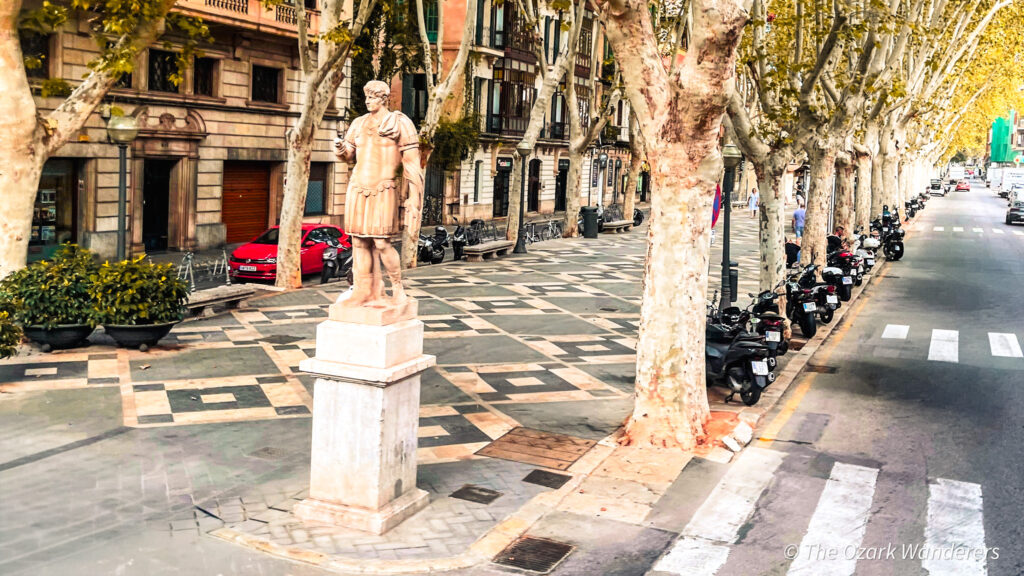
Bellver Castle
One of the highlights along the route was Bellver Castle, perched high above the city. Built in the early 1300s for King James II of Mallorca, it’s one of the few circular castles in all of Europe. Its Gothic arches surround a central courtyard that once served as a royal residence and later as a military prison. The name Bellver means beautiful view — and from its terraces you can see all of Palma and the bay below.
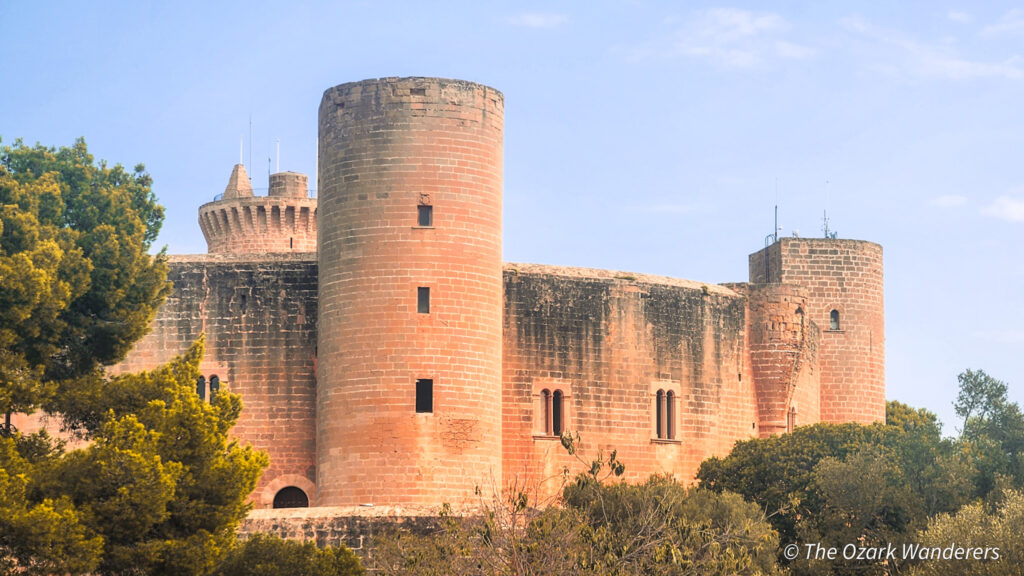
Es Jonquet Windmills
Farther along, the bus passed the windmills of Es Jonquet, a historic district that overlooks the harbor. These mills date back to the 1700s, when they were used to grind grain long before industrial machinery took over. They’ve since been preserved as cultural landmarks. Silent reminders of how central agriculture once was to island life.

I’ve always been fascinated by history, and it’s hard to wrap my mind around just how far back it all goes here. Some of these structures – like Bellver Castle we’d seen earlier – were standing in the 1300s. Trying to imagine daily life during that time, especially for the people who lived and worked in those walls, is almost impossible. What did they see from these same hills? How did women spend their days within the fortress walls, when travel meant horses and the sea, not airplanes and cruise ships?
It’s one of my favorite things about traveling in Europe, standing in a place where so many generations have lived, worked, and loved. Realizing just how recent our own modern world really is.
And it’s not just about marveling at the progress of the modern world, it’s about sensing the souls of those who stood on these same streets centuries ago. Their lives were harder, simpler, and shorter, yet they laughed, worked, dreamed, and stood in the same sun I did that day. When you realize that connection, it makes you feel both small and deeply human all at once.
La Seu Cathedral
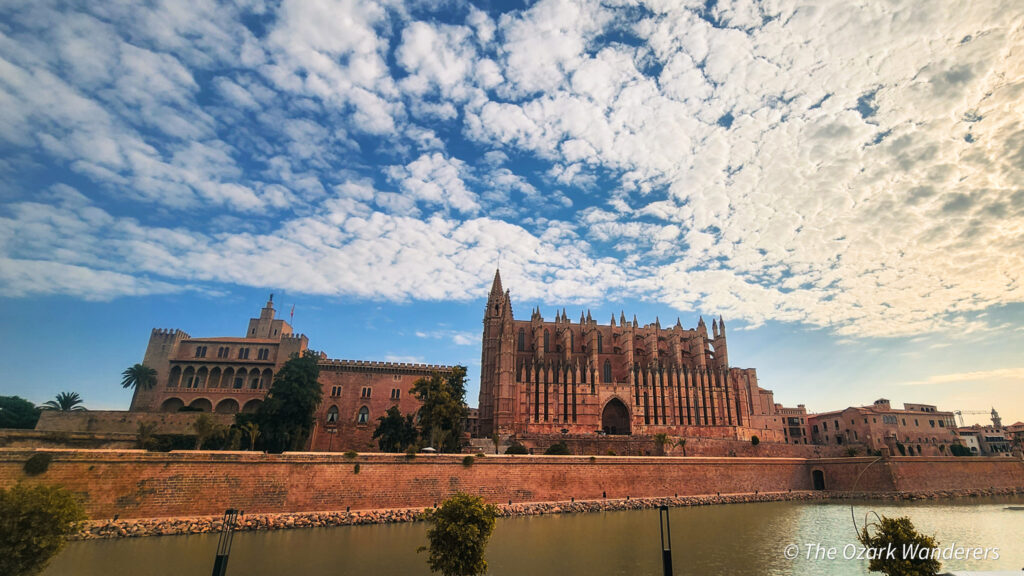
Our main stop was the Cathedral of Santa Maria of Palma, better known as La Seu. The cathedral sits on the site of a former mosque, a reminder of how many layers of faith and history are woven into this place.
From the early 700s until the 1200s, Mallorca was part of the Islamic world under Moorish rule. The Moors brought advanced farming systems, mathematics, and architecture that shaped much of Spain’s identity. When King James I of Aragon conquered the island in 1229, he consecrated the existing mosque to the Virgin Mary, and construction soon began on the grand Gothic cathedral that stands today.
That history gives me mixed emotions. As a Christian, I find cathedrals like this profoundly sacred. Not just for their beauty, but for what they represent. These are places where generations have come seeking God’s presence, praying for the sick, the dying, the lost, and the hopeful. You can almost feel those prayers in the walls. The sorrow, the gratitude, the human longing to be closer to something greater. Every stone seems to hold a story of both suffering and grace, and standing in that kind of space feels like standing in the shadow of a thousand acts of faith.
It’s difficult to reconcile how something so beautiful came from an age of conquest and conflict. But maybe that’s part of what makes it holy. That even out of violence and loss, people still turned their hearts toward God, still built something meant to lift the human spirit toward heaven.
We were deeply moved by its beauty and presence. Every cathedral we visited became a place of quiet pause for us – a moment to pray, to give thanks, and to feel small beneath the immensity of God’s creation.

Lunch & Gelato in Old Town Palma de Mallorca
After our cathedral stop, The Pilot wasn’t feeling great (probably a pastry-and-Bloody Mary combo too early in the Mediterranean heat), so he headed back to the ship. That left me third-wheeling with our friends and it turned into a fun afternoon.
We wandered through narrow alleys, stopping for lunch at an outdoor café. In true European fashion, everything moved at its own pace. Our waiter disappeared mid-service, food in hand, and crossed the street into another building — apparently taking his own lunch break! Eventually, our drinks arrived, followed by lunch, and we just laughed and enjoyed the slower rhythm of the day.
On the walk back, we stopped for gelato — because you can’t explore a European city without it. We passed another small church, grabbed one last drink, and finally made our way back to the ship.
It was one of those classic “Americans in Europe” days – a little confusion, a lot of laughs, and a perfect introduction to Mediterranean life. All in all, Palma de Mallorca was the perfect introduction to Europe. A city that felt both ancient and alive.
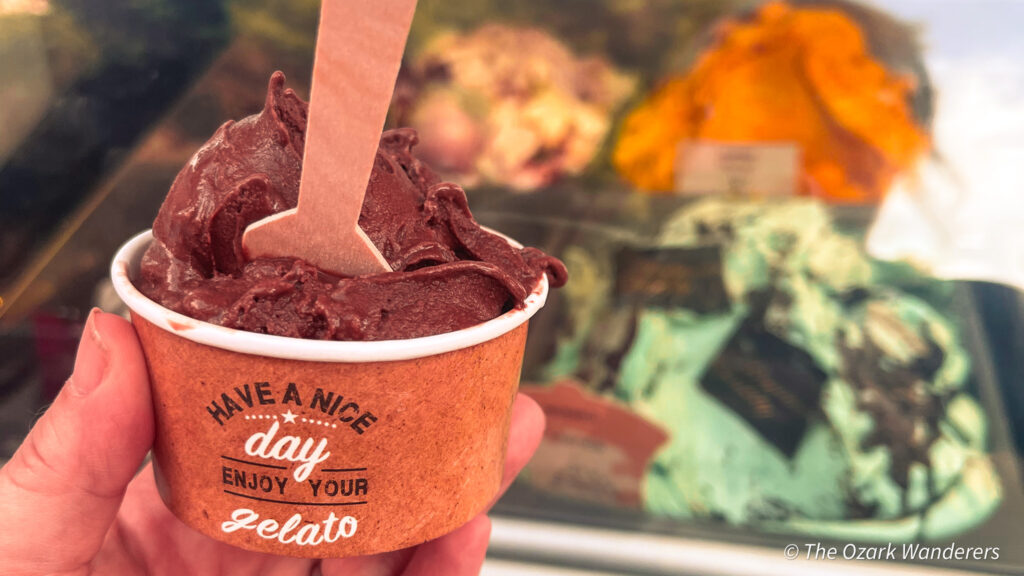
Day 1 Recap
Port: Palma de Mallorca, Spain
Excursion: Hop-On Hop-Off Bus + Self-Guided Walking
Highlights: Passeig del Born, Bellver Castle, La Seu Cathedral, Lunch in Old Town
Tip: If you only have a few hours, the HOHO bus gives a great overview — and be patient with service; you’re officially on island time.
Tomorrow – we have a sea day to prepare for non-stop tour of Italy.

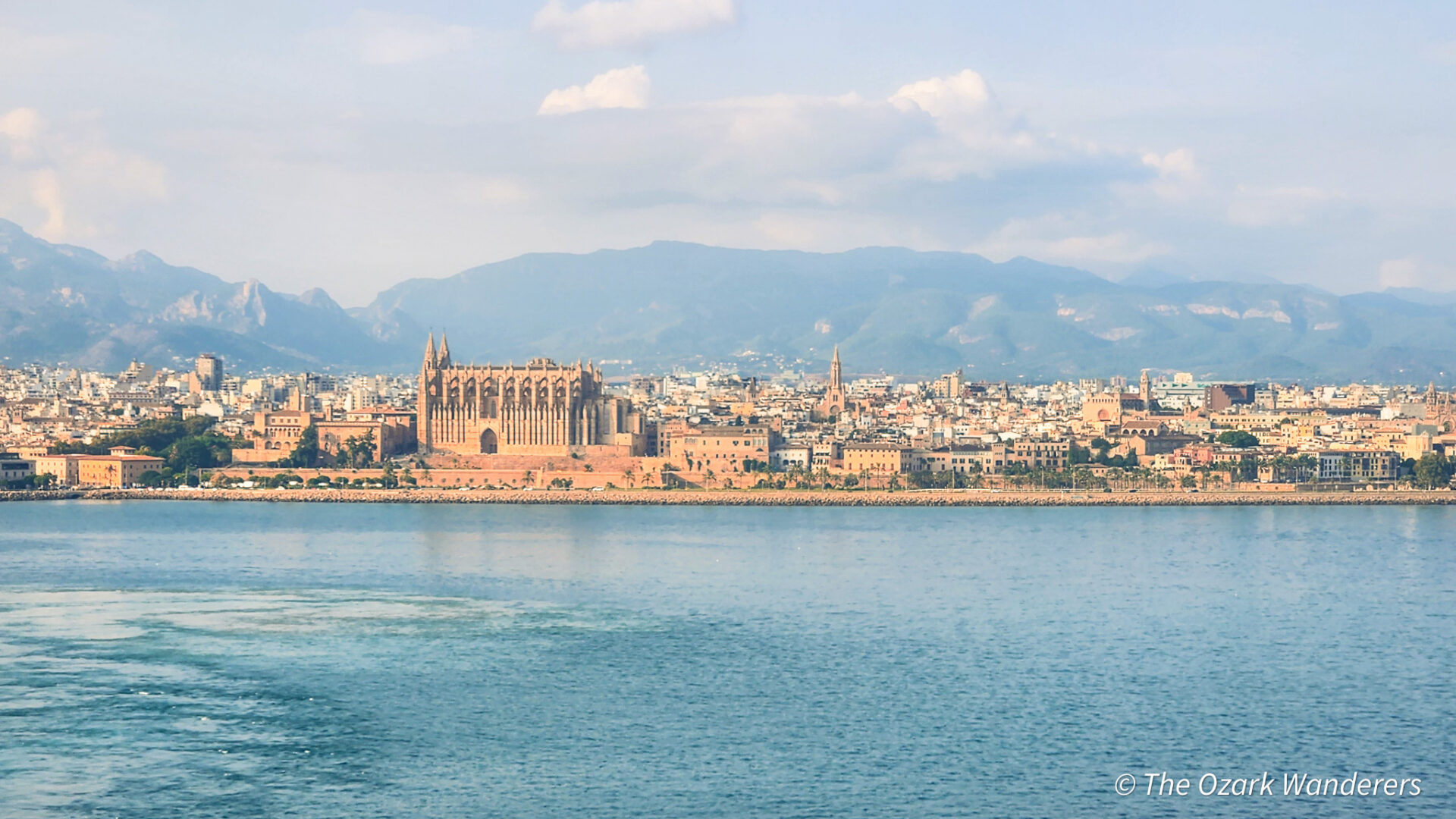
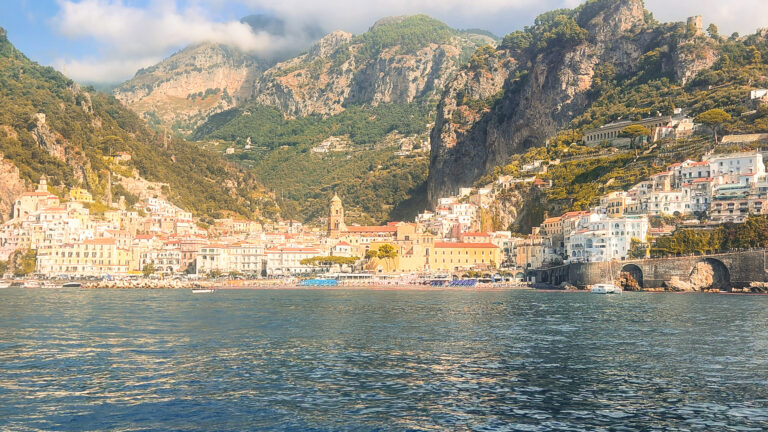


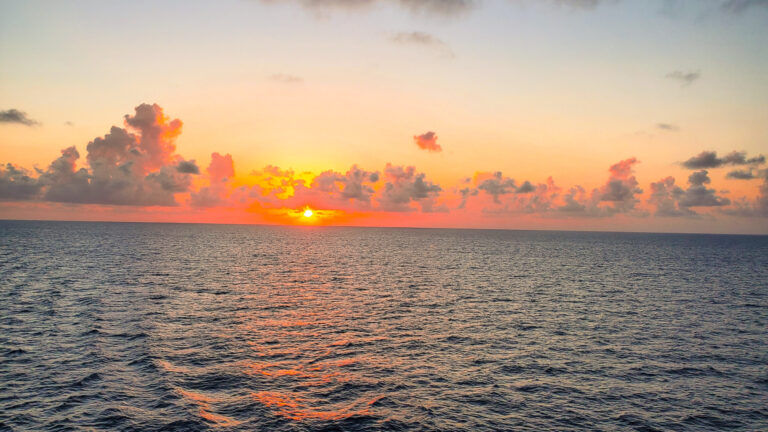
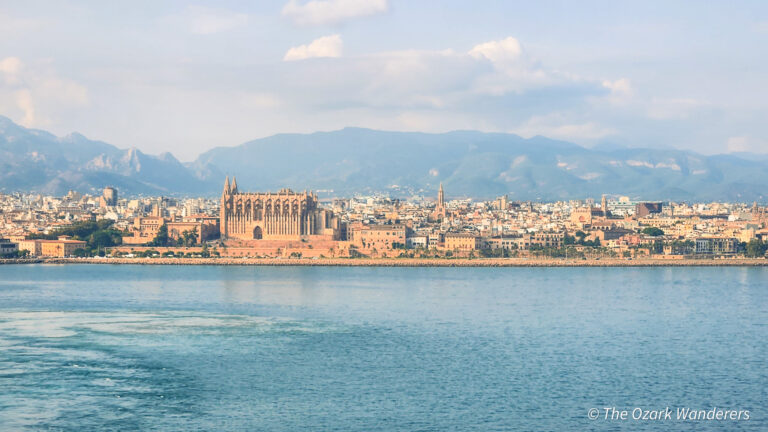

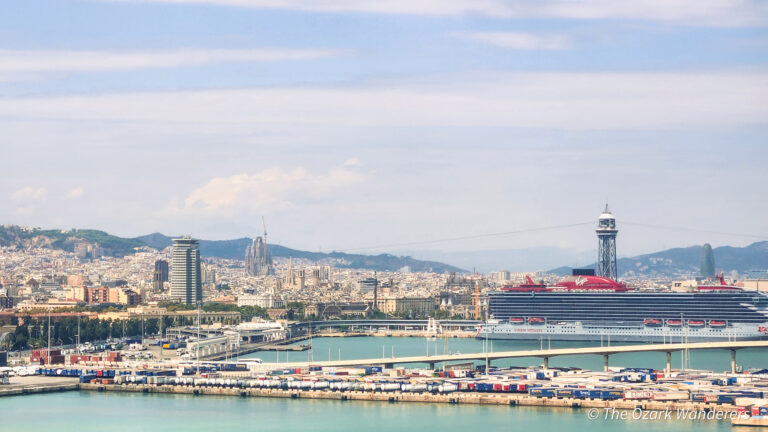
Leave a reply